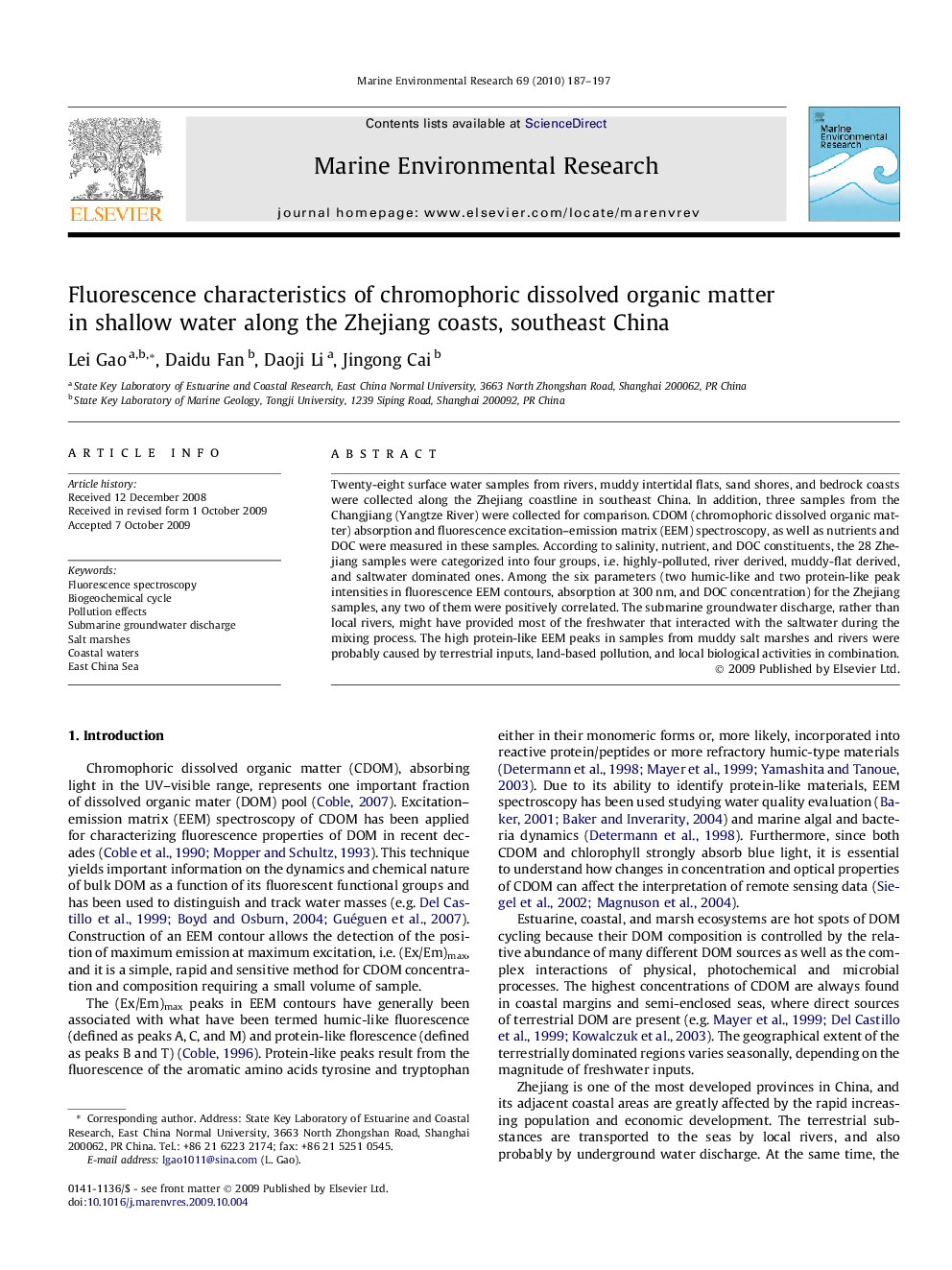| Article ID | Journal | Published Year | Pages | File Type |
|---|---|---|---|---|
| 4551257 | Marine Environmental Research | 2010 | 11 Pages |
Twenty-eight surface water samples from rivers, muddy intertidal flats, sand shores, and bedrock coasts were collected along the Zhejiang coastline in southeast China. In addition, three samples from the Changjiang (Yangtze River) were collected for comparison. CDOM (chromophoric dissolved organic matter) absorption and fluorescence excitation–emission matrix (EEM) spectroscopy, as well as nutrients and DOC were measured in these samples. According to salinity, nutrient, and DOC constituents, the 28 Zhejiang samples were categorized into four groups, i.e. highly-polluted, river derived, muddy-flat derived, and saltwater dominated ones. Among the six parameters (two humic-like and two protein-like peak intensities in fluorescence EEM contours, absorption at 300 nm, and DOC concentration) for the Zhejiang samples, any two of them were positively correlated. The submarine groundwater discharge, rather than local rivers, might have provided most of the freshwater that interacted with the saltwater during the mixing process. The high protein-like EEM peaks in samples from muddy salt marshes and rivers were probably caused by terrestrial inputs, land-based pollution, and local biological activities in combination.
